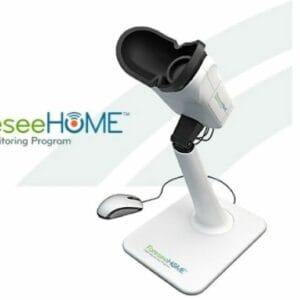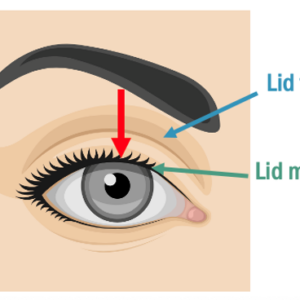January 9, 2024
The baby boomer population reached 55.8 million or 16.8% of the population of the United States in 2020. These people are the ones who need the most care when it comes to their eyes and vision. While there is no official age when presbyopia begins, it certainly affects nearly all individuals aged 65 and over, which is when they become eligible for the Medicare program. In 2021, Medicare Advantage covered nearly half of all Medicare beneficiaries (47%), or 27.6 million people with Medicare.1 The number and share of Medicare Advantage enrollees has increased since 2021, up to 30.8 million in 2023, or 51% of all eligible beneficiaries. The popularity of these plans has been steadily increasing in recent years due to the additional benefits they offer beyond traditional Medicare coverage, including vision care and optical benefits.
The original purpose of including private plans in Medicare was to allow the Medicare program to benefit from the reputed efficiencies of the private insurance market and enable Medicare beneficiaries to receive care through the few health maintenance organizations (HMOs), such as Kaiser Permanente, that existed at the time Medicare was enacted.2
Patient and provider complaints about prior-authorization requirements have become increasingly prominent in recent years. In contrast, traditional Medicare generally allows beneficiaries to use any doctor or facility that accepts Medicare payment, including optometrists, with no need to obtain approval before receiving services. Optometry’s inclusion in the federal Medicare program began on April 1, 1987, which formally classified optometrists as physicians — an important milestone for medical reimbursement protocols.3
In 2023, Medicare Advantage plans were widely available. The average beneficiary had a choice of 41 plans offered by eight insurers, and 99% of beneficiaries had access to at least one plan. Although more than 180 insurers provide Medicare Advantage plans, the three largest insurers — United Health Group, Humana, and CVS — accounted for 56% of enrollments in 2022.4
How Has Medicare Advantage Performed Compared With Traditional Medicare?
Critical dimensions of the performance of plans include their cost, quality, and degree of access to care for enrollees. With respect to cost, Medicare Advantage has not saved the federal government money. According to the Medicare Payment Advisory Commission (MedPAC), Medicare Advantage plans will cost Medicare approximately $27 billion more in aggregate for 2023 than Medicare would spend caring for the same patients in traditional Medicare.4
The higher costs of Medicare Advantage result largely from rebates, quality bonuses, and adjustments for risk. Risk-coding differences alone between Medicare Advantage and traditional Medicare are estimated to have increased payments to plans by $80 billion between 2007 and 2021.4 Higher Medicare Advantage costs not only increase federal spending but also raise Part B premiums and deductibles for all beneficiaries, even those in traditional Medicare. That is because Part B premiums and deductibles are calculated on the basis of the projected spending for both traditional Medicare and Medicare Advantage.
Overall satisfaction with Medicare Advantage plans is generally good. Overall customer satisfaction with Medicare Advantage plans is 652 (on a 1,000-point scale), which is squarely in the good-to-great range of the newly redesigned U.S. Medicare Advantage Study index model.5
Most Medicare Advantage plans contract directly with vision care companies, and it is therefore incumbent on the individual practitioner to become affiliated with the individual company when that is the case. When it comes to routine eye exams, Original Medicare/Medigap plans only cover them when the patient is diabetic, while Medicare Advantage Plans usually cover them annually. Glasses are only covered by Original Medicare Plans when cataract surgery has occurred, while Medicare Advantage plans almost always cover them. Medicare allows an annual eye exam for diabetic retinopathy if you have diabetes.
Most Medicare Advantage Plans Are Open to Optometrists
The five biggest health insurance companies in the U.S. are UnitedHealthcare, Anthem, Kaiser, Ambetter, and Humana. These five popular companies make up 50% of health care insurance enrollment. UnitedHealth Group is the largest with a 15% market share and an annual revenue of $189 billion. Many of the Medicare Advantage plans have an annual vision exam allowance, and some have a dollar maximum for glasses and/or contact lenses. While at one time many of these plans made it difficult for optometrists to participate, today most are open to any provider. In a March 3, 2022, newsletter, the American Optometric Association published an article “AOA to CMS: Hold Medicare Advantage Plans Accountable.” The article stated “With a potentially hefty revenue increase for Medicare Advantage (MA) plans looming in 2023, the AOA is calling on the Centers for Medicare & Medicaid Services (CMS) to ensure that plans are held accountable for improved patient benefits and care, and that it put an end to discrimination against doctors of optometry when it comes to participation in the plans.”
Because of the above information, all optometrists should attempt to become a participating provider for Medicare Advantage plans in their geographical area and report any difficulties in gaining admission to the AOA. Most importantly, make absolutely sure that you know how the plan operates and be sure you know how to “play the game.” These plans can be profitable, and it is incumbent upon our profession to be included. With dollar caps on optical goods, many patients often pay for extras with cash, and that can add up to a profitable experience for the provider.
References
1 Ochieng N. A Snapshot of Sources of Coverage Among Medicare Beneficiaries. KFF. Dec. 13, 2023
2 Zarabozo C. Milestones in Medicare Managed Care. Health Care Finance Rev 2000;22:61-7.
3 Rumpakis J. A Simpler Way to Code Office Encounters. Review of Optometry. Oct. 12, 2020
4 Report to the Congress: Medicare payment policy. Washington, DC: Medicare Payment Advisory Commission, March 15, 2023
5 For Medicare Advantage Plans, Trust and Problem Resolution Closely Associated with Likelihood to Renew, J.D. Power Finds. J.D. Power Aug. 22, 2023





